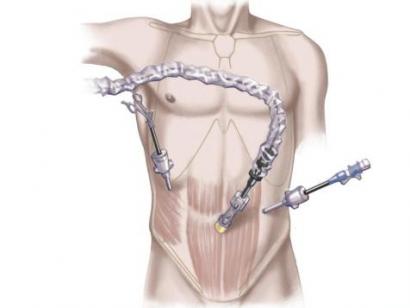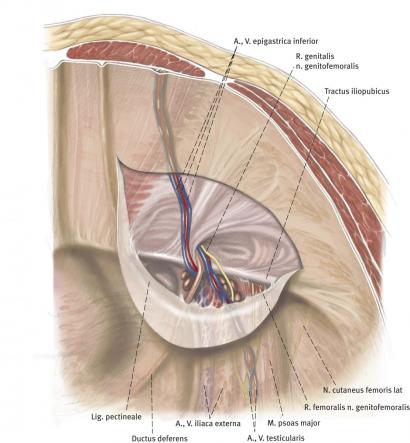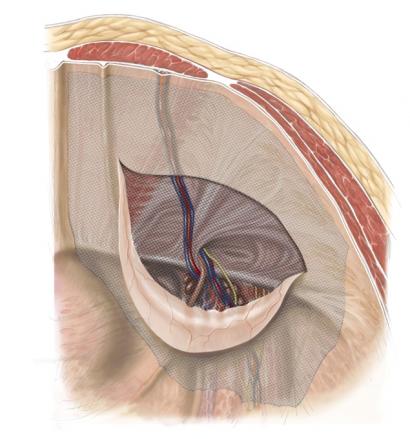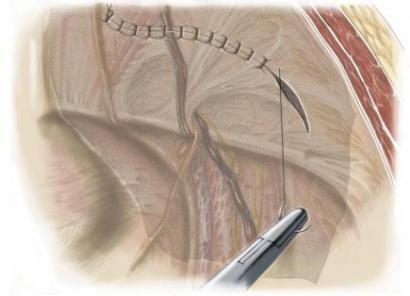3.1.3 TAPP
TAPP (Transabdominal Preperitoneal Repair) is an endoscopic or minimally invasive surgical technique. With this technique, a small incision is made at the lower margin of the navel. A special needle is introduced into this hole and the abdomen is filled with gas in order to press back the intestines and enable the surgeon to get a good view of internal structures. Next, a camera is introduced through the same hole and via two further small incisions on the right and left of the navel surgical instruments are introduced [Fig. 17]. After cutting through the peritoneum [Fig. 18], the hernial sac is carefully removed from the hernia orifice and then a sufficiently large synthetic mesh is unfolded and placed over the hole ([Fig. 19]. In general, meshes measuring at least 15 x 10 cm are used. The peritoneal opening is closed again with a suture [Fig. 20] to ensure that the mesh will not come directly into contact with intestinal loops (danger of it becoming stuck to these (causing adhesions).
If a bilateral hernia is present, both hernias can be treated in a single procedure. TAPP is used in particular for bilateral hernias as well as for recurrent hernias following previous open surgery. General anaesthesia is needed for endoscopic or minimally invasive surgery of inguinal hernias.

Fig. 17: Introduction of trocars (TAPP)

Fig. 18: Incision of peritoneum (TAPP)

Fig. 19: Fitting of synthetic mesh (TAPP)

Fig. 20: Closing of peritoneum with suture (TAPP)
